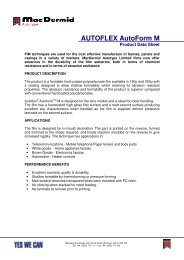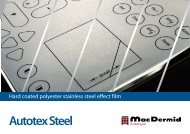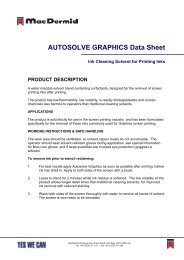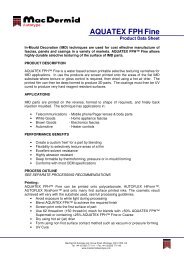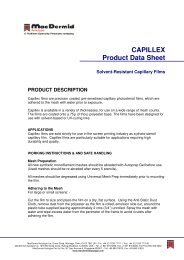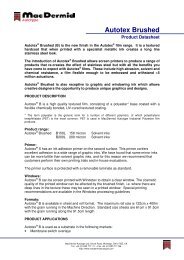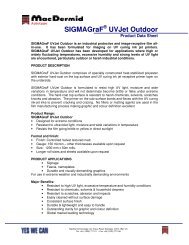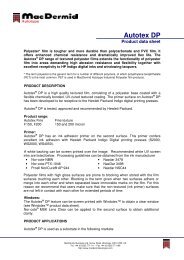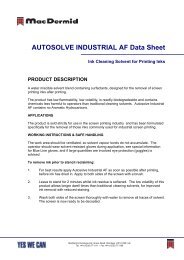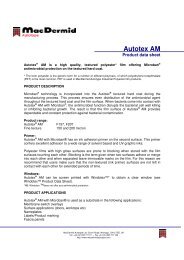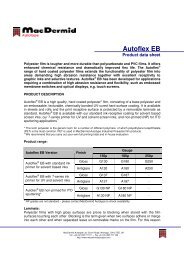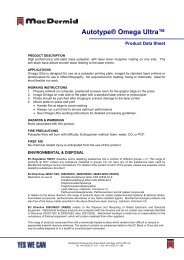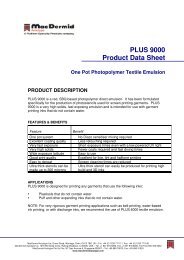Screen E-Book (.PDF) - MacDermid Autotype
Screen E-Book (.PDF) - MacDermid Autotype
Screen E-Book (.PDF) - MacDermid Autotype
- No tags were found...
You also want an ePaper? Increase the reach of your titles
YUMPU automatically turns print PDFs into web optimized ePapers that Google loves.
Comparing lamp ageAs lamps get older the light integrator willensure that the same amount of light hitsthe stencil so maintaining the level of cureby increasing the exposure time. As lampsget older, however, the wavelength emittedalso shifts. The intensity of the longerwavelength light decreases relative tothe shorter wavelength. The longer wavelengthlight penetrates better than shorterwavelength light. So the lamp can deteriorateenough to give poor through-curewhilst still seeming to be bright. Regularlamp changes are essential to prevent thisproblem.Practical issuesAlthough it may seem obvious, we haveto point out some practical issues whichhave caused many print-shop problems.• Dirty glass increases exposure times andthe scattering causes loss of resolution.• A poor vacuum gives poor contact betweenfilm positive and stencil and thereforea loss of resolution.• A change of mesh-count has a complicatedeffect on exposure time. There is nogood way to calculate the various tradeoffs,so if you change your mesh, you mustre-optimize your exposure.<strong>Autotype</strong> Exposure CalculatorExposure is extremely important to the finishedstencil and the most frequent causeof stencil failure. The <strong>Autotype</strong> ExposureCalculator provides quick, accurate determinationof exposure times with all photostencilsystems. It can also be used as aprinting aid to optimise print quality, or asa means of process control.To use the calculator for diazo and dualcureemulsions.1. Estimate the correct exposure time usingthe guidelines available for all <strong>Autotype</strong>photostencil materials then DOUBLE it.2. Expose the photostencil to the ExposureCalculator in the normal way, washoutand dry thoroughly.3. Examine the stencil in white light anddetermine the correct exposure time bycolour change.The stencil will show variations in colourfrom one factor to the next. Follow thecolour change through shades of yellowuntil it stops. The factor where the colourchange stops is the column that representsoptimum exposure.Once the correct factor has been chosen,multiply the factor by the test exposuretime. This gives the correct exposure time69



